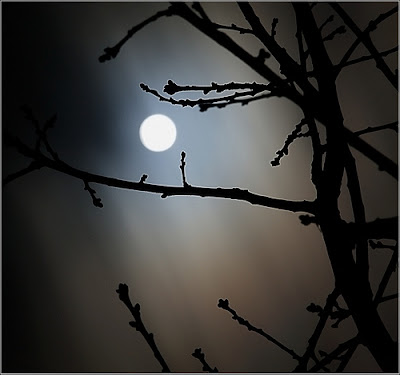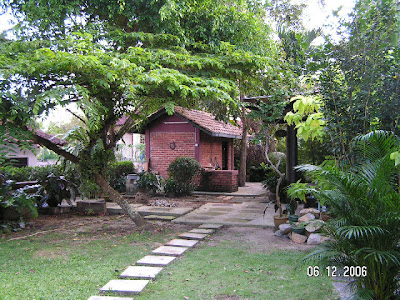 Photo: krowsternowing what Digital Camera Accessories you Nee
Photo: krowsternowing what Digital Camera Accessories you NeeKnowing what Digital Camera Accessories you Need
By Luvi Marie Corcuera
Capturing a moment is best done with photography and in this time and age, the best option for this is through digital photography using a digital camera. Whether you are the type of person that is into photography or simply someone fascinated with capturing the beauty of certain views, then with a digital camera you will be able to tell the story of a moment that cannot be brought back. Digital photography allows you to touch many lives through the images of beauty and art which you are able to capture and be able to store electronically. It may perhaps be an option for others to be a profession and this could profession could even bring a lucrative compensation should you decide to take this path.
Living in today's high-tech world allows us to make use of the digital camera technology making it easier for us to shoot pictures on the go and be able to have them available in less time and with the use of digital camera accessories be able to improve or enhance the quality and experience of digital photography. The digital camera accessories available today as tools makes it better choice for us to invest in them especially if this becomes a hobby or a profession.
The Basic Necessities for Capturing the MomentIt doesn't really matter whether or not you do photography for profit or simply for leisure, it is probable that the next best equipment you need to invest in other than a nice new digital SLR camera are the digital camera accessories that you will use along with it. There are various types of digital camera accessories available that you may either need immediately or would need in the future which would help you with keeping your equipment in good shape, improve the quality of your photos, add additional capacity to your work output, reduce the complexities or simply just enhance your own photography experience. Some of the digital camera accessories may include any of the following and depending on your needs may even be further augmented as the need arises:
Camera BagsThe first probable investment being the camera bag, this is where you will place all the things that you will need when you are location shooting or traveling and it would also serve as your basic kit where all your photography equipment is stored and protected well. It is also one of the most inexpensive accessories that you may ever buy and add to this is that they enable you carry and protect the expensive equipment that you carry around. Camera bags come in many different shapes, sizes and colors through a wide variety of different brand names that specialize in this, and they are available for anyone's personal preference.
Camera TripodOf the camera accessories, perhaps the camera tripod is one that will help a lot of people since it helps reduce the amount of "camera shakes" when taking photos and allows you to take shots from a variety of angles. While does seem that this is a bulky and cumbersome accessory you should know that a great majority of tripods are either foldable or retractable and should be able to fit in most of the medium size to larger camera bags. If you happen to have one of the older tripods which you have used for your traditional cameras, then you should be ware that some of them are actually compatible with today's digital cameras and you may not need to re-invest in a new camera tripod. Just the ability to have steadier shot and a finer finished product is a must for many and this makes the camera tripod a great digital camera accessory to have and perhaps even a necessity for some.
Battery ChargersFor people who take vacations and for those that visit remote locations without the convenience or availability of digital camera accessories shops, the use of a battery charger is important. Even if you carry with you extra batteries sometimes these batteries just all of a sudden get drained and you are left with no power to your digital camera thereby rendering them useless. Having a battery charger is very handy in some situations and this may be the difference in being able to take that critical photo should the need arise. Being extremely affordable, it should be considered whenever deciding to but that those additional digital camera accessories on your next shopping spree.
Memory CardsThe memory card for a digital camera is perhaps the most important digital camera accessory for many as akin to a traditional camera that needs film, a digital camera needs memory for storage of images. Most people take this likely since the capacity of the memory cards they purchase with their digital camera is sometimes sufficient, it should however be known that some people do not delete or transfer the contents of the memory to other devices like PC's and in some cases the memory becomes full. Having that extra memory card with you will help reduce this from happening and will also be of great assistance during times when a large volume of photos need to be taken especially for professionals and for those that take a vacation in remote places where they are unable to transfer the images, and with no shops readily available in the vicinity.
You never know when your existing memory card will fail so keeping an extra card can pay dividends when the time comes. Just be aware though of what type of memory card your digital camera uses as there are various types of cards available for different digital cameras such as SD cards and Sony memory sticks. You don't want to buy a memory card that is not compatible to your digital camera.
Other Important Accessories
Lastly, one of the digital camera accessories that you may want to have is the digital photo printer, which is especially useful if you want to print your photos from the comfort of your home. Most locals now have photo shops that can process the printing of your digital images but for some the ability be able to print from home or from anywhere, then a photo printer is a must. All you will really need is to have printing consumables always available, your personal choice of photo paper such as matte or gloss and you will be able to print off any photo you want, at the sizes and quality you need. Most of the printers in the market today are already of photo output quality and the choice these days is what size of footprint you want, depending on your needs i.e. if you travel a lot then perhaps a small size printer will be best for you.
Conclusion
Whether you are a professional photographer or just enjoy taking pictures, you should be fully aware of the various digital camera accessories that are available in the market that can perhaps help you reduce the amount of effort in your profession or simply improve your photography experience. Some of these accessories can be expensive but a majority of them are indeed quite affordable and for many are in fact a necessity, and by being able to to have them can sometimes make the difference of being able to have that all important and perhaps even life changing moment captured. Availability for most of the accessories for your digital camera is in most cases excellent with a great number of electronic equipment shops in most locals and not to forget the growth of internet shops that specialize in providing thee services.
As a final note, even if the requirement for digital camera accessories is not for you, then perhaps someone you know such as family and friends has these needs and this actually makes for great gifts on special occasions like birthdays. Anyone with a digital camera will be more than happy to receive these accessories as gifts and this should give you more options when giving away gifts this Christmas or any other occasion during the year.
Luvi Marie Corcuera is a full time Mom and works part time as the Editor of Informational sites such as: Acne Treatment and
Cake Decoration
Article Source:
http://EzineArticles.com/?expert=Luvi_Marie_Corcuerahttp://EzineArticles.com/?Knowing-what-Digital-Camera-Accessories-you-Need&id=775651
 Photo: nature55
Photo: nature55











